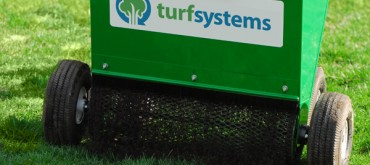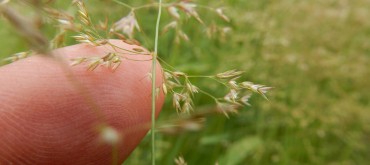It is a common misconception that any time it rains, you no longer need to water your lawn. Even in heavy rainfall, it is often not enough water to keep your turf’s root zone moist.
An easy way to tell if your lawn has received enough water from the rain is with a rain gauge. If it fills up to 1” or more, you no longer need to water. There are inexpensive rain gauges available, or you can always collect rainfall in a tuna can. If it has filled to the rim, it is likely that enough water has absorbed into your lawn to a depth that will benefit the roots. It is also helpful to observe if the rainfall fell quickly or over a longer period of time. Heavy thunderstorms, while producing significant rain amounts, tend to run off of the soil surface rather than be absorbed. Whereas an all-day shower will provide enough time to penetrate the soil surface and reach to far greater depths with very little run off.
Another trick to determine whether your lawn is getting enough water is by using a screwdriver or simple kitchen knife. If you are able to easily stick the screwdriver 6”-8” into your soil, especially if it is clay, then you are likely getting adequate water.
If there has not been enough rainfall, it is a good idea to water your lawn accordingly, so that your turf receives at least 1” of water once per week. It is important to water your lawn deeply and infrequently as it will allow grass roots to grow further into the soil, creating a stronger root system as well as a thicker and healthier lawn. Clay based lawns typically hold water longer allowing them to need watering less often. Sand based lawns will usually require you to water a little more frequently, since sand tends to hold less water. In both cases, it is still important to water deeply and infrequently.
It is importnant not to water in the evenings as this is one of the primary reasons diseases can be a problem, especially during periods of drought stress. Lawn diseases typically need a host plant that is under some sort of environmental stress, darkness (which night time provides), and sufficient moisture to allow the disease to grow. Therefore, by watering in the mornings or early afternoons and avoiding the evening after work, you can help avoid many disease problems that cause brown lawns. If you think you have a disease in your lawn, please visit our common lawn diseases page to diagnose the problem.
If you would like more information about how to water your lawn, please feel free to give our friendly staff a call.





